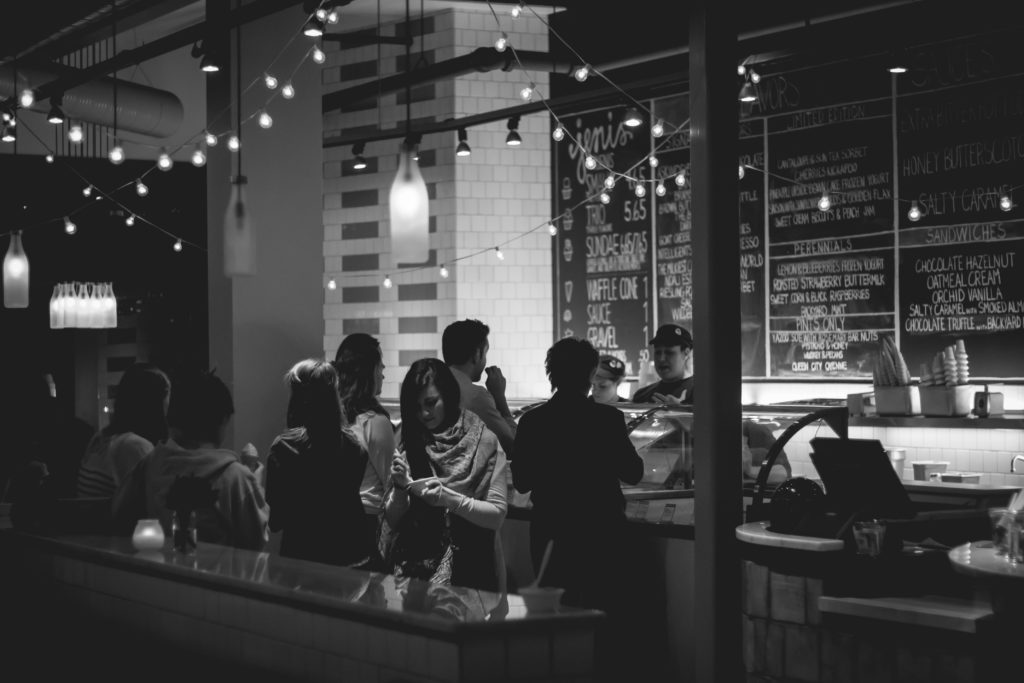Tripadvisor is riddled with reviews such as, “Excellent facilities, shame about the hard sell,” and “Terrible restaurant, hard sell all night.” It just proves this sales approach is seen as an annoyance at best and a scam at worst.
Throughout the hospitality industry and especially at restaurants, we know the hard sell rarely works so what about selling without all the pressure? When done right, selling smarter, not harder, can build deeper relationships with customers. If you can make your customer feel like you’re helping them get something they really want then you’ll both win. So what subtler sales approaches can help you fatten up your bottom line?
1) Location-based marketing
As smartphone adoption surpasses saturation, many restaurant owners and operators have already, or are making plans to, launch a mobile app for their brand. One of the major benefits of embracing mobile is the powerful potential of location-based marketing. By pairing this tech with captured and analysed customer data, restaurants can drive footfall in increasingly clever ways.
Guests can use their smartphones to find their nearest store, restaurants can push tailored offers and alerts when guests are nearing their outlets and customers can provide free advertising for brands by checking-in on their social media channels during their meal. Just recently, US chain Cousins Subs used location data to target its customers through niche interests, behaviours and demographics. They deliver restaurant-specific, localised advertising content during peak and off-peak hours to drive local awareness and in-store traffic and to convert online orders.
If I was walking to work and heard the familiar ping of my mobile as I passed my local eatery to find a messaging saying, “Hey Nick, it’s cold today. We have a free, steaming cup of hot chocolate waiting for you, when you buy any warm-out-the-oven muffin. Pop in!” I know I’d be sitting at my desk, cocoa in hand and white chocolate and raspberry muffin crumbs on my face quicker than you can say ‘take my money’.
2) Automated upsell/cross-sell during the ordering process
We’ve all felt the pressure. All eyes on us. The waiter impatiently looking around a packed restaurant while you furiously study the menu and force yourself to make a rash decision on a dish you know you’re going to suffer buyer’s remorse from. To add fuel to the fire, the waiter is now upselling a myriad of sides to go with your order, two of which you have no idea what they are but are too flustered to ask.
Offering the upsell within an app when a guest is ordering a meal over mobile – at a relevant time and place – nudges them to think about other items they might like to order that best accompany their dish of choice and alleviates the pressure of staff standing over them while they make a decision.
In fact, research suggests that when customers are more relaxed and not under pressure to order with wait staff, they actually order more. A recent study of 1,000s of transactions from QikServe clients showed an up-lift in spend per head of between 50% – 73% when they ordered through their mobile rather than wait staff.
3) Check-in/sign-up offers
As illustrated above, when it comes to selling, timing is everything. When guests are signing-up to a brand’s mobile app or service or even checking-in to their store, that’s a perfect time to entice them further with a tailored offer. For example, Prezo Grille & Bar will take $5 off your bill when you check-in at their restaurant on Facebook – valuable advertising for them and a good deal for their customers.
Restaurant owners and operators can encourage further social interaction with guests really fostering that positive sentiment towards their brand. For example, when a customer checks-in to TGI Fridays, the bartender receives a text saying what the customer likes as well as their social media profile photo so they can be identified. It’s pretty impressive that wait staff can now ask, “The usual?” even if you’ve not eaten there enough times for them to know what your ‘usual’ is!
4) Loyalty
A mobile loyalty card on its own is simply a ‘dumb’ stamp or points collection. But when you season it with some perfectly ripe customer data captured during the ordering process, you have a recipe for loyalty success. Superdrug, with over 10M loyalty members are “…personalising offers for customers based on their shopping habits, making sure we are giving them the deals and promotions which are relevant and engaging.”
Loyalty trumps the upsell every time because it feels like it’s the customer’s choice to trust and continue to use your brand rather than them being ‘sold to’. If the loyalty stamp or points system meant customers were offered discounts on their favourite food and drink or promotions were based on their past buying behaviours, brands would be infinitely more successful in nurturing long term business from their guests. Why? Because the customer would feel like you’ve actually listened to their needs and wants and that they are being rewarded for something they would buy anyway.
Brands are realising that technologies such as mobile order and pay apps with integrated upsell, location-tech and customer data capture can improve their bottom line in a much bigger and more measurable way than hard core hard sell while at the same time fostering that all important loyalty. So next time, why not take the hard sell off the boil and try and softer, subtler flavours of the selling spectrum!





